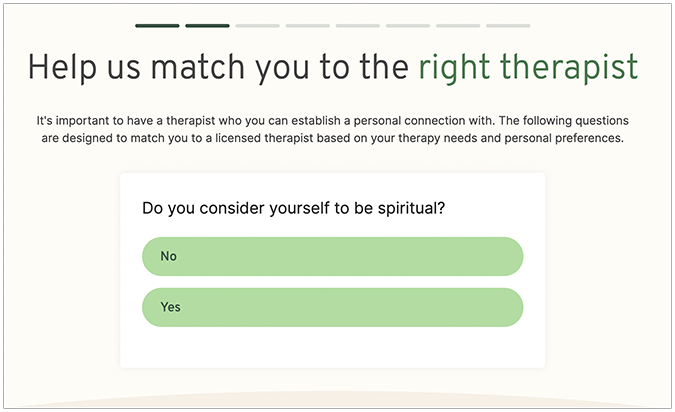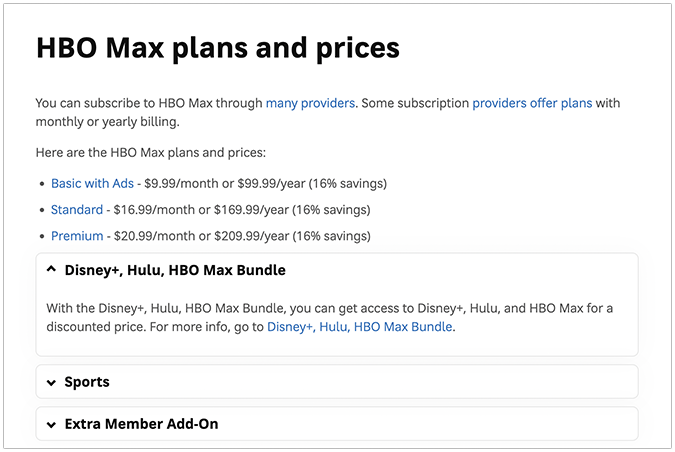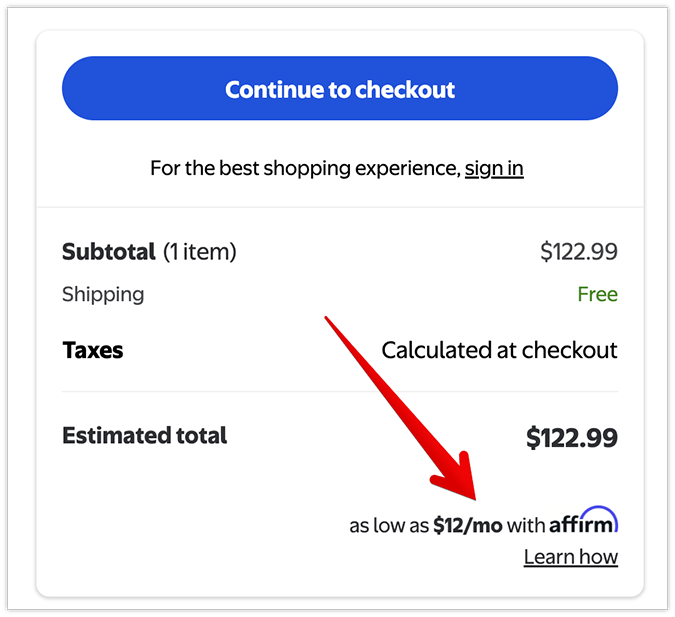Deploying the right upselling tactics during an active purchase can boost revenue, improve your brand’s reputation, and build customer trust. On the flip side, failing to integrate upselling at the appropriate phase of the sales funnel, or being overly aggressive in your approach, can harm your brand in the long run. Ultimately, a misaligned upselling arrangement can cause a sharp drop in your bottom line, turning brand recovery into a long, arduous, and painful process.
Here’s how to avoid the pitfalls of upselling and, instead, deploy it effectively for achieving a desirable outcome.
What Is an Upsell?
Upselling, also known as an upsell, is a common sales strategy where a company encourages, nudges, or straight-up pressures customers into buying a more expensive product or service. Like an overseas shipping warranty for a hardcover book collection.
Upsells vs Cross-sells
Offering complementary products to go with the original purchase isn’t upselling. This strategy is called cross-selling, and it’s typically used in conjunction with upselling to achieve a similar—albeit slightly different result.
For instance, cross-selling often enhances product adoption and increases average order value (AOV), while upselling typically raises single transaction value and improves profit margin per sale. Read more about the differences and similarities between these two strategies in our upsells vs cross-sells guide.
Types of Upsells (+ Top Tier Examples for Each)
There are several types of upselling strategies, some of which are tangentially related to cross-selling to achieve the most optimal results sales-wise. Taking the hybrids of upsells and cross-sells into account, here are five of the most popular and widely used upselling methods today.
1. Upgrading to a premium product or service
This type of upsell typically tries to sell the customer a premium, higher-quality, or feature-rich version of the same product or service. Notable examples include getting the 256GB iPhone instead of the 128GB model or adding more flowers to enrich a birthday bouquet.
Proflowers is a textbook example of well-integrated upselling through product upgrades in action.

First, there’s an obvious discount that greets the visitor right under the product’s name. It signals a greater perceived value at a lower price.
Secondly, the upgrading options aren’t aggressive or overly out there, so they don’t dissuade buyers who’ve already made up their minds. The way it’s structured, the conversion funnel offers the upgrade as an organic part of the purchasing process, with options that blend well into the site’s user interface and don’t elicit an unwarranted eyesore when presented to the audience.
Lastly, customers are nudged with a sense of added urgency, i.e., they’re asked to place the order within the given time limit for same-day delivery. It’s a functional trifecta of sales tactics that work harmoniously within the context of a modern flower boutique.
As a bonus, customers are given the option to include add-ons in their carts before completing the order. It’s a classic example of cross-selling working its magic in a competitive online environment.


2. Extending discounts on limited-time offers
Discounts are a tried-and-true way to draw more eyeballs to your brand, helping promote products and services that otherwise might not have reached a best-selling status. When paired with limited-time or one-time offers, these tactics create a sense of urgency, pushing buyers to act before they lose the favorable offer for good.
For example, Best Buy features a “deal of the day” section, where it showcases one or more discounted products—but with a catch. Each offer is timed to expire after a set period, rarely coming back once it disappears.

This triggers FOMO and builds a genuine desire in people to circle back frequently to check if there are any fresh offers on products they’re excited to buy.

3. Promoting personalized service recommendations
In ecommerce, product or service recommendations come in two forms: personalized, which considers the buyer’s preferences, and non-personalized, which uses metadata like item or service popularity to promote certain products over others.
If the visitor is a repeat customer (which requires some form of authentication, such as a registered account), they can be served personalized product or service recommendations to better match their needs. If not, the seller can proceed with a “fallback plan,” where the recommendation algorithm creates suggestions based on existing data at that time, including region, search intent, time of visit, and click activity.
Despite their relatively recent controversy in handling user data, Better Help offers visitors an extensive questionnaire to help determine the best type of therapy for their needs.

The main downside of a highly personalized service-selling strategy is that user information is ultimately left in the company’s hands. That data can then be sold to third parties, hacked in an attack if proper cybersecurity measures aren’t implemented, or even leaked to the general public either intentionally or by mistake. It’s something worth considering if you’re thinking about handing over your personal information to companies in exchange for a more personalized online shopping experience.

4. Comparing multiple paid tiers side by side
This upselling type, also known as tiered pricing, is a powerful selling model predominantly used in subscription and service-based offerings.
Let’s assume your audience includes three groups of users who are interested in your movie streaming service: casual watchers, who like to watch 1-2 movies per month, advanced watchers, who seek out cult classics and lesser-known gems 4-5 times a month, and hardcore movie aficionados, who like to stream everything almost daily.
Offering a single package for all audience cohorts simply won’t be enough. Some people might become dissatisfied with their plan since they’re not getting the content they want, while others might feel like they’re drenched in unnecessary expenses for screenings they won’t be using at all. Creating multiple tiers to address each group’s needs can be the ideal solution to this conundrum.
HBO Max simplifies this on its landing page by displaying two main tiers: Standard and Premium.

However, the full extent of its tiers is actually more comprehensive than what’s shown on the homepage. It features an additional Basic with Ads plan, and several extra bundles (a prime example of cross-selling) for the more active moviegoing audience.

This technique is effective for both casual watchers, because they can subscribe to the service with a single click, and true movie and TV enthusiasts, who can explore further and find a more complete plan to meet their needs. It’s a solid example of upselling and cross-selling working together to supercharge a streaming-focused sales model.
5. Providing flexible financing plans
Many online retailers have recognized the effectiveness of flexible credit extensions, i.e., the Buy Now, Pay Later (BNPL) upselling paradigm. Putting forth options such as Klarna, PayPal Pay Later, or Affirm gives buyers an additional wiggle room to spend more on premium or higher-tier product versions while paying over an extended timeframe. The BPLN strategy can increase average order values and provide customers with an immediate bump in their spending power, which they can use in your shop.
Affirm enables customers to split their payments into smaller installments, often with zero or a very small interest rate. Users can take advantage of the Affirm credit card or use its application to unlock favorable financing offers and shop with a boost in their spending power at major retailers like Amazon, Chewy, Walmart, eBay, and The Home Depot.

If a buyer qualifies for an offer, they’ll be able to select Affirm as a payment option in the checkout section during an active purchase. A successful BPNL-powered transaction can leave a lasting positive impact and contribute to a smooth shopping experience all around.

Which Upsells to Prioritize for the Biggest Impact on Revenue
Generally speaking, upsells are best utilized during the checkout experience or immediately after a purchase. For ecommerce stores, consider displaying a relevant upsell offer directly on the checkout page. As there’s no one-size-fits-all solution, this can be anything from a premium product, a higher-tier item, a limited-time discount, or a flexible payment option. Make sure the added offers are relevant to the customer’s previous purchases and fall in line with your niche, giving interested buyers a chance to opt in with little friction.
SaaS business owners can get the most out of upsells by showing them immediately before the payment goes through. This plays well into the customer’s peak interest, as they’re already committed to making the purchase. Frame the upsell as the next logical step in the sales funnel, providing added value to customers by showing it from a contextually relevant angle.
Lastly, don’t discard the effectiveness of post-checkout upselling. Consider adding a one-click upgrade, an exclusive deal, or priority support after the payment goes through. Shoppers are still engaged at this phase and open to additional offers, especially if you’re extending tangible value on top of their original purchase.
In short, tactically use upselling on the checkout page, just before payment, or post-purchase to drive a significant boost in revenue and profits without annoying, or in extreme cases, driving away your new and repeat customers.
Upsell Benchmarks: When to Know You’ve Done Enough
Knowing if your upselling implementation works as intended requires testing against existing industry benchmarks. Ecommerce leaders like Amazon attribute up to 35% of their total revenue to a blend of upselling and cross-selling strategies. However, most online stores should aim for an upsell rate of between 15-25%. In summary, consider setting your upselling target at 20%, setting a healthy baseline to enable future gradual improvements at scale.
To calculate your upsell rate, divide the number of successful upsells by the total number of upsell attempts, then multiply the result by 100, like this:
Upsell Rate = (Successful Upsells / Total Upsell Attempts) × 100
For detailed tracking, consider monitoring this metric at each critical upselling junction, including at checkout, just before a transaction, and post-purchase. This setup will give you a clearer picture of where your offers perform well and where tweaks may be required to make tweaks to avoid upsetting your customers.
According to a study by Accenture, effective upselling can boost revenue by 10-30%. Another research paper on sales and marketing by Dipak Jain and Siddharta Singh found that upselling increases customer lifetime value by at least 20%, with a potential upper limit of 40%. If you’re constantly meeting or exceeding these rates, it means your upselling strategy is working well. If not, consider making adjustments (such as A/B testing different checkout flows or bringing in an external consultancy) to identify, analyze, and optimize your upselling conversion rates.
When Upsells Go Too Far and Get Too Aggressive
Here are three examples of overly pushy upselling implementations, each demonstrating how— instead of drawing them in—aggressive sales strategies may turn customers away from your brand for good.
1. GoDaddy
This approach is common with many domain registrars, which try to upsell you on professional email addresses, additional security services, and premium top-level domains at nearly every step of the checkout process.

What’s more, you can’t circumvent these prompts, as they’re integrated with the main offering. Some of the upsells or cross-sells are even checked on by default, so if you’re not careful, you might end up paying for something you never wanted to buy.


Better alternative: Only a select few brands can get away with this aggressive approach— GoDaddy being one of them. If you’re a smaller business, consider adding just one upsell and one cross-sell option before checkout, followed by a single promotional email after the purchase is completed. Otherwise, people will abandon your platform for a more trusted competitor.
2. Carcovers.com
Once you click the “Add to Cart” button, this car cover retailer aggressively pushes users to add more, seemingly unrelated products to their carts. On top of that, the UI is designed to trick you into thinking you must provide your email in order to buy a car cover. In practice, you can click the smaller, non-highlighted prompt labeled “Continue without email” that lets you proceed without sharing your personal information.

Better alternative: While it leans more on the cross-selling side, Carcovers.com’s checkout funnel could be updated to better reflect people’s needs based on their original purchase. The user interface should be more transparent and friction-free, while the onslaught of barely related product recommendations should wait until after the purchase is made.
3. Walmart
Walmart goes full nuclear on upselling and cross-selling during the purchase phase. It displays three different lines of item recommendations once you add a product to your cart, including a general cross-sell under “Customers also bought these products”, a specific product-related cross-sell like “Maintain and clean your pool with ease”, and a set of unrelated cross-sells called “Popular items.”



Then, Walmart hits you with two more cross-sell attempts when you click on your cart. First, it shows a “Recommended with your order” section, followed by an additional seasonal offer under “Trending now: Summer edition.”


Despite all that, it’s not all grim and dark in the world of marketing and sales. One positive takeaway is Walmart’s use of Affirm, offering an upsell in the form of a delayed payment, i.e., a BNPL option.

Better alternative: Consider personalizing the recommended items and reducing the frequency of suggestions before and during the checkout phase of the buying process.





